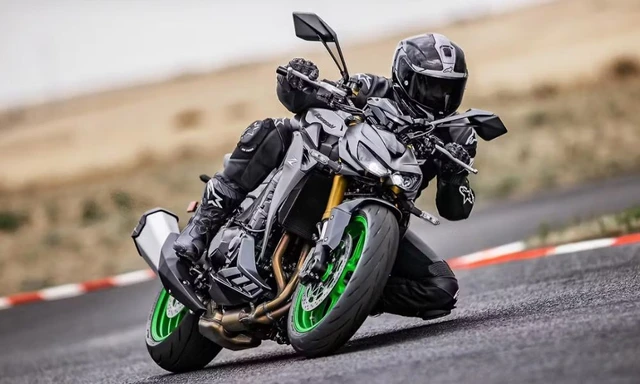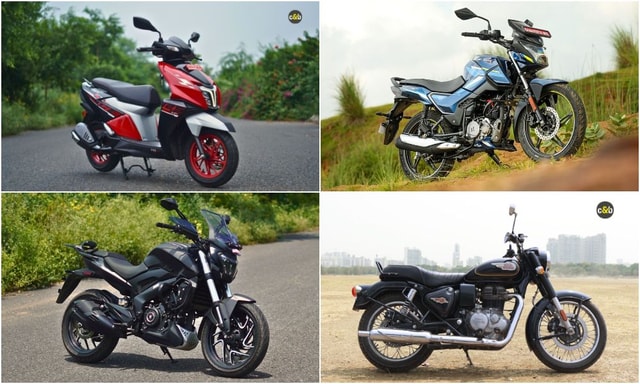Why Nvidia's Acquisition Of ARM Is A Big Deal For Self-Driving Cars

- Nvidia's acquistion of ARM will supercharge self driving cars
- Most self driving cars use ARM's technology
- Nvidia used to supply to Tesla and soon will supply to Mercedes
Today most self-driving cars, with any level of autonomous capability use chips mostly from Nvidia. Even Tesla's used Nvidia's chips till recently as last year. In 2019, Elon Musk announced the FSD chip which Tesla announced last August. Musk went to claim that its chips were now fundamentally better than Nvidia's by a huge margin. Today, it so happens, Nvidia has acquired a company called ARM which again means that Tesla's FSD chips have Nvidia's technology in them.
ARM is perhaps the most important company in the world you've not heard of. ARM is the British computing giant which was owned by SoftBank for the last four years. ARM's business model is a unique one. It designs chips which are based on its own architecture which has now been proven to be ubiquitous across phones, smartwatches, IoT products, self-driving cars, tablets and soon will even power Apple's Mac line of PCs. Both Nvidia and Tesla leveraged its chip architecture for the CPUs on the system on chip (SoCs) they have deployed in the space. Now, ARM is owned by Nvidia - and by default Nvidia because of the acquisition becomes the most powerful and ubiquitous semiconductor company on the planet.
Semiconductors are at the heart of autonomous cars and there can be no better union than Nvidia and ARM. Add to this, the fact that almost everyone uses ARM's instruction set and designs means that infusion of Nvidia's AI and graphical technology in ARM's designs could mean a huge thing for the general computing paradigm of the world. When seen from the worldview of the self-driving landscape this will have huge ramifications.
What's the plan for Nvidia + ARM and challenges

Nvidia's CEO Jensen Huang said that he intends to keep ARM as a separate unit of the Nvidia. It will continue to be based out Cambridge in the UK. Huang stressed the fact that ARM will be operated as a neutral platform as there is no incentive in alienating clients considering the huge $40 billion sum being paid for it. Huang also added that Nvidia will invest further in Cambridge creating a new AI and self-driving centre and also will co-develop a supercomputer. SoftBank will hold less than 10 per cent of Nvidia as a result of this deal.
There are some challenges with regards to the closure of this deal especially with the regulators in China. The US-China trade war will lead to complications to issues with regulators in China. Huang believes Nvidia can swing the deal but there will be challenges. Already, ARM's Chinese subsidiary is in control of China and it has engaged in a legal tangle in order to evict the head of ARM China. Considering the US pressure against Chinese tech giants like ByteDance and Huawei, ARM may not be allowed to sell to an American company.
ARM's co-founder Hermann Hauser also expressed concerns related to the acquisition as he believed that Nvidia will destroy ARM's unique business model of licensing the design and instruction set of chips and allow companies like Apple, Tesla, Qualcomm, Nvidia and others to develop their own unique chips around its core architecture. He believed it would also cause issues with doing business with Chinese firms as once the acquisition is complete ARM will be beholden to the rules of the US government.
Neutrality will be also an issue. For instance, Nvidia and Apple famously don't have a happy relationship. All of Apple's products are based on ARM's architecture. It is likely Apple has acquired a perpetual license for ARM's chips but neutrality will be important. Similarly, Tesla's chips also leverage ARM's instruction set for the FSD. Nvidia will have to operate ARM separately as a neutral platform and focus more towards fusing its technology with its architecture more distinctly.
How does Nvidia's self-driving technology benefit from an ARM

Nvidia's AGR ORIN SoC is the next big autonomous platform
Nvidia's current AGX chips based on the Xavier family of SoCs is the world's first commercially available Level 2+ automated driving system. By 2022, Nvidia will release DRIVE AGX ORIN which represents a 7x performance over the Xavier. Now all of these chips have core based on ARM's architecture. The ORIN, for instance, has 12 ARM-based CPU cores that Nvidia calls Hercules. This is paired with a next-generation GPU stack which Nvidia hasn't named but could be a derivative of the GeForce 3080ti PC gaming GPU it has recently released.
Nvidia's weakness has always been performance per watt and CPU based compute. It excels at heavy-duty workloads which include things like graphics and on-device machine learning for artificial intelligence. On a car that would mean processing all the data collated from the sensors and LiDARs quickly and accurately while consuming as little energy as possible. This becomes even more important in self-driving cars which are also electric cars.
ARM's relationships with many automakers will also get Nvidia new clients. For example, ARM has already joined hands with Toyota and General Motors to make a common computing system for self driving cars. It has played a huge role in forming the Autonomous Vehicle Computing Consortium which involves players like Bosch. Dense and Continental AG. This group also includes Nvidia and NXP Semiconductors. The idea of this consortium is to create a common OS for self driving cars like Android is for phones and Windows is for PCs. ARM will be the obvious basis of the CPU architecture and Nvidia will likely provide the brains for the graphics and AI workloads. ARMs unification with Nvidia will provide for a more integrated approach.
It takes more than a billion lines of code to power a fully autonomous car. ARM is a past master in simplifying systems. ARM's RISC architecture which is used across everything from self-driving cars to the iPhone stands for Reduced Instruction Set and it will be pivotal in reducing software development work and power consumption for autonomous tech to become pervasive.
ARM is also at the forefront of making autonomous cars safer. Its Cortex A76AE is the first CPU architecture that has been designed with self-driving cars in mind. Any chip that will leverage the Cortex A76AE chip will be amongst the safest in the industry as these are the first ones to have gone through rigorous functional safety processes and also include features like dual-core lockstep for redundancy of CPU cores. ARM has also developed more purpose-built automotive IP such as machine learning accelerators and GPUs will further likely get advanced with the fusion of Nvidia's tech in the space.
Nvidia's ORIN AGX CPU's are said to be one step ahead of what has already been announced. It is said to be on the Cortex A77, but it is likely this is not an AE version which is meant for autonomous vehicles. Going farther out in the future Nvidia and ARM will be more aligned and that will ensure just better products.
Nvidia's platform will be soon used in future Mercedes Benz's cars. There is a commitment to co-develop software-defined cars which will be based on ORIN. ARM will again play a huge role on the integration side as the development of the software platform will be based on the core ARM instruction set.
Latest News
 Hansaj Kukreti | Jan 2, 2026BYD Sealion 7 Electric SUV Price Hiked By Rs 50,000BYD has increased the price of the Sealion 7 Premium by ₹50,000, effective January 1, 2026, taking it to ₹49.40 lakh; pricing for the Performance variant remains unchanged at ₹54.9 lakh, while existing bookings made before December 31, 2025, will retain the old price.1 min read
Hansaj Kukreti | Jan 2, 2026BYD Sealion 7 Electric SUV Price Hiked By Rs 50,000BYD has increased the price of the Sealion 7 Premium by ₹50,000, effective January 1, 2026, taking it to ₹49.40 lakh; pricing for the Performance variant remains unchanged at ₹54.9 lakh, while existing bookings made before December 31, 2025, will retain the old price.1 min read Janak Sorap | Jan 2, 2026Kawasaki Z1100 Fully Booked for 2026All 20 units of the Kawasaki Z1100 allocated for 2026 are fully reserved. Next bookings batch haven’t been announced yet.1 min read
Janak Sorap | Jan 2, 2026Kawasaki Z1100 Fully Booked for 2026All 20 units of the Kawasaki Z1100 allocated for 2026 are fully reserved. Next bookings batch haven’t been announced yet.1 min read Preetam Bora | Jan 2, 2026Ducati Panigale V4 R Launched In India At Rs. 84.99 LakhThe Ducati Panigale V4 R is a road-legal superbike, a version of Ducati’s WSBK contender that sits between the Panigale V4 S and Ducati’s MotoGP machines.1 min read
Preetam Bora | Jan 2, 2026Ducati Panigale V4 R Launched In India At Rs. 84.99 LakhThe Ducati Panigale V4 R is a road-legal superbike, a version of Ducati’s WSBK contender that sits between the Panigale V4 S and Ducati’s MotoGP machines.1 min read car&bike Team | Jan 2, 2026Two-Wheeler Sales December 2025: Most Brands Report Sustained GrowthIn the last month of 2025, most two-wheeler manufacturers reported strong growth numbers.1 min read
car&bike Team | Jan 2, 2026Two-Wheeler Sales December 2025: Most Brands Report Sustained GrowthIn the last month of 2025, most two-wheeler manufacturers reported strong growth numbers.1 min read Jaiveer Mehra | Jan 2, 2026New Kia Seltos vs Tata Sierra: Pricing ComparedKia has come out all guns blazing with the second-gen Seltos, with prices starting barely Rs 20,000 higher than the outgoing model. But how does it compare to the other newcomer in the segment, the Tata Sierra?5 mins read
Jaiveer Mehra | Jan 2, 2026New Kia Seltos vs Tata Sierra: Pricing ComparedKia has come out all guns blazing with the second-gen Seltos, with prices starting barely Rs 20,000 higher than the outgoing model. But how does it compare to the other newcomer in the segment, the Tata Sierra?5 mins read Bilal Firfiray | Jan 2, 2026BYD Records 4.6 Million Global Sales in 2025; EV Deliveries of 2.26 Million Could Top TeslaBYD hit 4.6 million sales in 2025 but saw its slowest growth in 5 years. Overseas deliveries crossed 1 million, while 2.26 million EV sales could push it past Tesla for the first time.2 mins read
Bilal Firfiray | Jan 2, 2026BYD Records 4.6 Million Global Sales in 2025; EV Deliveries of 2.26 Million Could Top TeslaBYD hit 4.6 million sales in 2025 but saw its slowest growth in 5 years. Overseas deliveries crossed 1 million, while 2.26 million EV sales could push it past Tesla for the first time.2 mins read
 Amaan Ahmed | Jan 3, 2026VLF Mobster 135 300 KM Review: Fun But FlawedA 125 cc scooter with Italian design and Chinese genes is a rare combination, and while some may be tempted to dismiss it because of its origins, the VLF Mobster shows 125s can also be exciting – but not without compromises.1 min read
Amaan Ahmed | Jan 3, 2026VLF Mobster 135 300 KM Review: Fun But FlawedA 125 cc scooter with Italian design and Chinese genes is a rare combination, and while some may be tempted to dismiss it because of its origins, the VLF Mobster shows 125s can also be exciting – but not without compromises.1 min read Preetam Bora | Dec 30, 2025TVS Orbiter Review: Real-World Performance and Range TestedThe TVS Orbiter is a promising electric scooter promising decent range, practicality and pricing. But is there any reason to avoid it? We spent a few days getting to know it better.9 mins read
Preetam Bora | Dec 30, 2025TVS Orbiter Review: Real-World Performance and Range TestedThe TVS Orbiter is a promising electric scooter promising decent range, practicality and pricing. But is there any reason to avoid it? We spent a few days getting to know it better.9 mins read Jafar Rizvi | Dec 24, 2025MG Windsor EV 38 kWh Long-Term Report: IntroductionThe Windsor EV has joined our garage, and before it settles into daily duty, I took it out to get a sense of what living with an electric car is like.4 mins read
Jafar Rizvi | Dec 24, 2025MG Windsor EV 38 kWh Long-Term Report: IntroductionThe Windsor EV has joined our garage, and before it settles into daily duty, I took it out to get a sense of what living with an electric car is like.4 mins read Seshan Vijayraghvan | Dec 23, 20252026 Kia Seltos Review: Formula Is Spot On, But Is The Timing Right?The 2nd-gen Kia Seltos has arrived, but it has the challenge of facing strong rivals like the Victoris and Sierra. The question is simple - Does it still have what it takes?9 mins read
Seshan Vijayraghvan | Dec 23, 20252026 Kia Seltos Review: Formula Is Spot On, But Is The Timing Right?The 2nd-gen Kia Seltos has arrived, but it has the challenge of facing strong rivals like the Victoris and Sierra. The question is simple - Does it still have what it takes?9 mins read car&bike Team | Dec 26, 2025Tata Punch EV Long-Term Second Report: Highway Performance, Pros & ConsAfter a week of living with the Tata Punch EV Long Range—including a proper Mumbai-Nashik highway test—we've learned what this little electric SUV is really made of.1 min read
car&bike Team | Dec 26, 2025Tata Punch EV Long-Term Second Report: Highway Performance, Pros & ConsAfter a week of living with the Tata Punch EV Long Range—including a proper Mumbai-Nashik highway test—we've learned what this little electric SUV is really made of.1 min read






















































































































